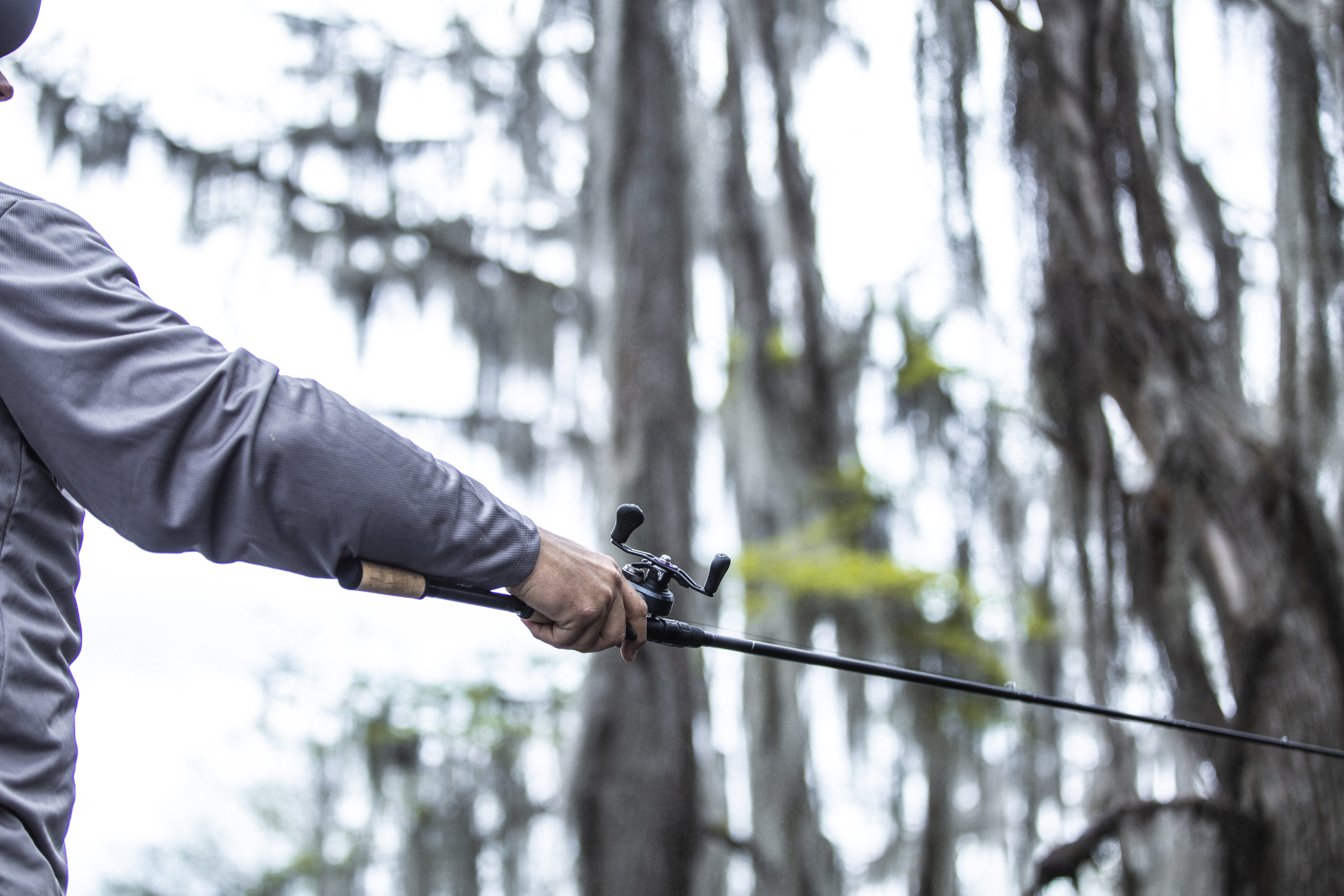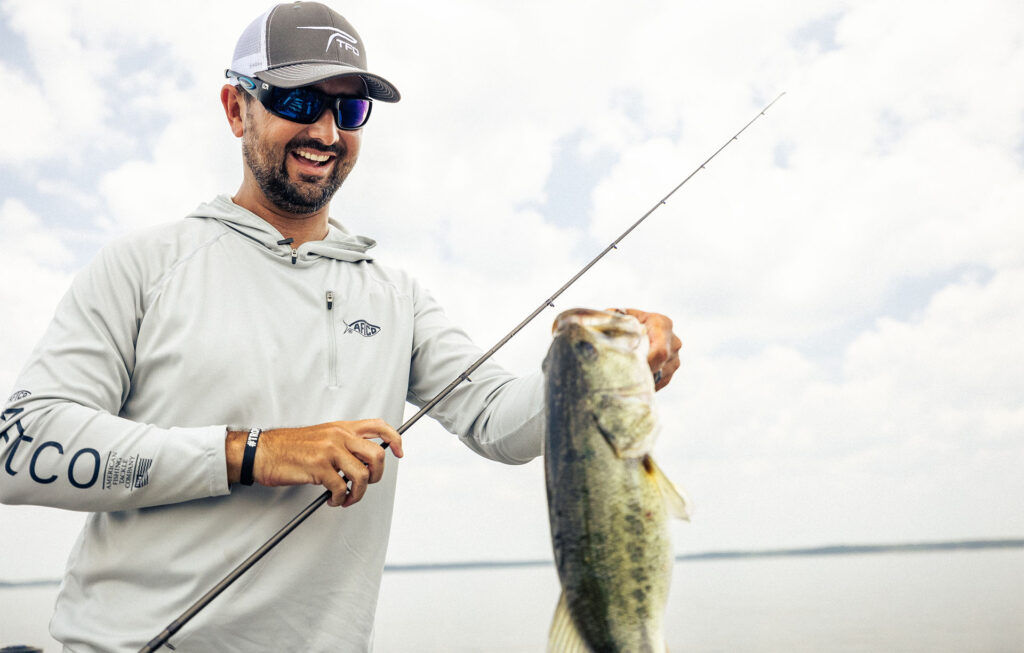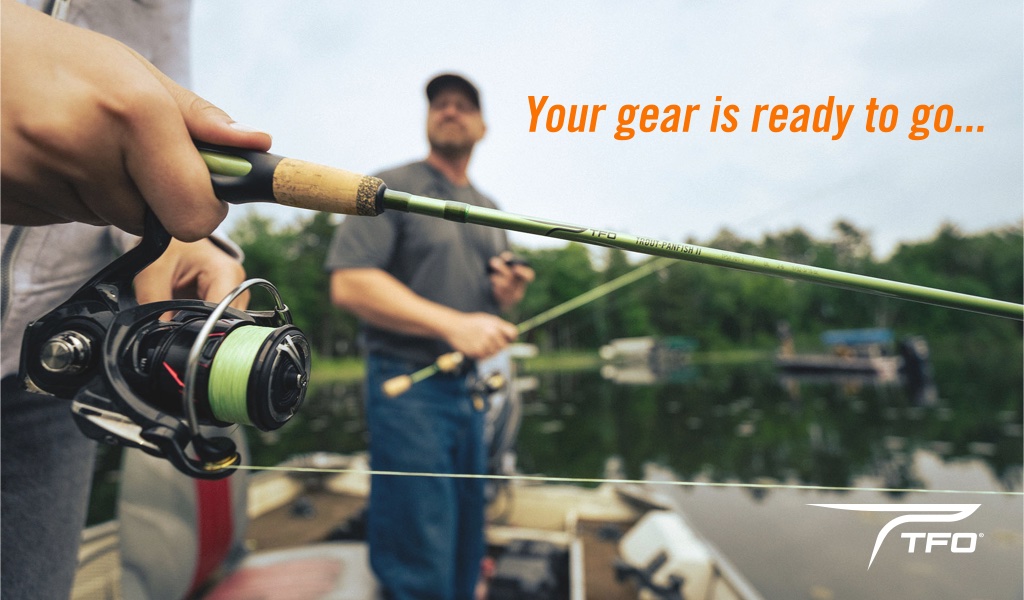During the dog days of summer in the heat of the day, depending on the type of water you are fishing bass are going to either go deep or relate to structure and shade in shallow areas. When I first started cutting my teeth on fishing bass tournaments flipping and pitching quickly became one of my favorite ways to catch largemouth bass. I started fishing tournaments in 1995 when I was stationed in Yuma, Arizona while serving in the Marines. The lower Colorado River in the middle of the desert is a jungle paradise for bass anglers which offers many different types of thick vegetation from tules, cane, grass, and trees. It also offers dead wood trees and a few areas that have docks.
The Gear
When largemouth bass are buried in deep cover where they are hard to get to and hard to get them out of with other techniques flipping and pitching are the way to go. One of the most important things for flipping and pitching is a stout rod so that when you get a fish on you can clear that fish of any cover as quickly as possible. For most situations, I like to use a 7’6″ Extra Heavy casting rod. Temple Fork makes this in their Tactical Bass series ( TAC FS 767-1) which is an excellent tool for this scenario. I’ll pair this rod up with a high speed Shimano Chronarch 8.1:1 gear ration reel spooled with 65 lb P-Line TCB8 braided line. When I’m flipping or pitching I am also using heavy or superline hooks so they don’t bend out when I horse that big bass out of the cover. Also the larger the bass, the harder the roof of their mouth is which requires greater force – especially with heavier hooks to achieve adequate hook penetration past the barb. The Tactical Bass 7’6″ XH has the power to get both done. I use braid whenever I can get away with it; however, if the water is super clear or if I’m fishing light cover like grass I will go to a 25lb fluorocarbon leader, fluorocarbon is also a good idea around old dead wood that braid might saw into.
Basic Techniques
Flipping is fishing like you would with a cane pole with no reel. The only exception is that since you do have a reel you can increase your distance by letting a little additional line out by pulling the excess line out away from the reel with your free hand and then feeding it smoothly back through the guides as your are flipping the bait to your target. The advantage of flipping is if the targets are close to the boat you can flip to many more targets within a shorter time than pitching.
Pitching is great for reaching targets a little further away than flipping. Start with enough line out to be able to hold the bait in your free hand next to your rod butt or reel and then lowering the tip of your rod with your bait caster thumb bar depressed and thumb on the spool. Then, simply let go of the bait with your free hand and raise your rod tip to guide the bait to where you want it to go, while at the same time thumbing the spool to let line go out as you control the bait. Keeping the bait low to the water and controlling with the thumb also helps to make and entry with very little to no splash with practice. If you are new to fishing, it may be best to watch some videos on how to perform these techniques to get a better idea.
When to Flip and Pitch
Fish naturally relate to cover, so flipping and pitching anytime can be productive. I like to flip and pitch in water usually less than 6′ but have fished deeper. If you are fishing open shallow water and the reaction bite seems to slow down or isn’t productive, you can either look for deeper structure or go in shallow after the fish by flipping and pitching. Fish seek the cover for security, shade, and food so don’t be afraid to go in after them.
Baits
I personally like to use the following baits:
- Flipping jigs with trailers and heavy weed guards.
- Texas Rigged beaver/creature baits.
- Darker colors in dirty stained water and natural colors in clear water.
- 1/2 ounce baits are a good starting point and then adjust heavier or lighter depending on conditions.

Photo: Steve Lund
Quick Pointers
- I prefer to lock my drag down so that the fish can’t take any line. I want to get good hook penetration and I want to clear the fish from cover as quickly as possible. I will only lighten the drag in areas where clearing the fish fast off the cover is not as crucial like soft grass or vertical poles. When I loosen the drag some, I will use my thumb to lock down the spool for the initial hook set.
- By using a high speed reel, this allows you to take up any slack line faster to set the hook, catch up to a fish running at you quicker, and also get your bait back to the boat faster for the next pitch.
- Use heavy hooks, smaller hooks can bend out and cause you to lose fish when muscling them out of heavy cover.
- Pick your targets out and try to establish a pattern. Are you catching fish on one side or the other (Shady side or sunny side, up current side or down side) At the bottom, in the middle, or near the surface as you are pulling out?
- When you flip or pitch to your target be ready for a bite at any moment, let your bait fall to the bottom, twitch a few times, pull the bait out and repeat. Depending on the how the fish are reacting you may need to try soaking a bait a little longer with more twitches, try dead sticking for a bit, or shake and bump the bait against cover at the surface.
- Look for shallow structure/vegetation areas that are close to deep water, big fish like to sit in shallow haunts near deep water for an easy retreat.
- Practice controlling the entry of the bait to make as little water disturbance as possible upon entry.
- Ease the bait out of the cover so your weed guard or weedless Texas rigged bait doesn’t expose the hook and snag up on the cover.
Conclusion
Flipping and pitching have been a staple in my fishing success since I first started tournament fishing. It is a very effective technique that not only puts fish in the boat but has put many good quality fish in the boat and has contributed to many of my tournament wins. Fish love to bury themselves in cover so don’t be afraid to go in after them, Just make sure you are well equipped to do so, you might just find that big fish you’ve been looking for!
Blog written by TFO Ambassador Steve Lund. You can find out more about Steve here.

Photo: Steve Lund
![]()







